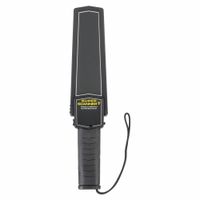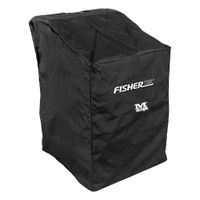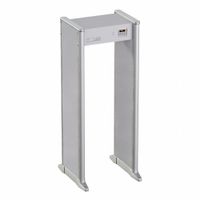Call +(254) 703 030 000 / 751 483 999 / 721 704 777
.....Read More
Frequently Asked Questions
What is the best metal detector for beginners?
The best metal detector for beginners is the Garrett ACE 300. It offers a balance of user-friendly features, performance, and affordability, making it ideal for those new to metal detecting. The ACE 300 comes with a digital target ID, which helps users identify the type of metal detected, reducing the learning curve. It has a frequency of 8 kHz, suitable for detecting coins, jewelry, and relics, and includes five search modes to cater to different detecting needs.
The detector is lightweight, making it easy to handle for extended periods, and features an adjustable stem to accommodate users of different heights. The ACE 300 also includes a large, easy-to-read LCD screen, which displays important information such as depth indicator and battery level. Its built-in pinpointing feature allows beginners to locate targets more accurately without additional tools.
Additionally, the Garrett ACE 300 comes with a submersible search coil, enabling users to search in shallow water, expanding the range of environments where it can be used. The detector also includes volume control headphones, which help in noisy environments and ensure that users can hear faint signals.
Overall, the Garrett ACE 300 provides a comprehensive package for beginners, combining ease of use with effective features that help new users quickly learn and enjoy the hobby of metal detecting.
How do walk-through metal detectors work?
Walk-through metal detectors operate using electromagnetic fields to detect metal objects. They consist of a vertical frame with coils of wire embedded within. When powered, these coils generate a low-frequency electromagnetic field. As a person passes through the detector, any metal object they carry disrupts this field.
The process begins with the transmission coil, which emits an alternating current, creating an oscillating electromagnetic field. This field induces eddy currents in metallic objects, generating their own magnetic fields. The receiving coil, also embedded in the detector, senses these secondary magnetic fields.
The detector's electronics analyze the changes in the electromagnetic field. If the disruption exceeds a certain threshold, the system triggers an alarm. The sensitivity of the detector can be adjusted to ignore small metal objects like keys or coins, focusing instead on larger items like weapons.
Advanced detectors use multiple zones, each with its own set of coils, allowing them to pinpoint the location of the metal object on the person. This zonal detection helps security personnel identify and address potential threats more efficiently.
Walk-through metal detectors are widely used in security settings such as airports, courthouses, and event venues to prevent the entry of prohibited metal objects. They are designed to be safe for all individuals, including those with medical implants, as they use non-ionizing radiation.
Can metal detectors detect all types of metals?
Metal detectors can detect most types of metals, but their effectiveness varies based on the metal's properties and the detector's technology. Metal detectors work by generating a magnetic field and detecting disturbances caused by conductive materials. They are generally effective at detecting ferrous metals, like iron and steel, due to their magnetic properties. Non-ferrous metals, such as aluminum, copper, and brass, are also detectable because they conduct electricity, although the detection range might differ.
However, some metals pose challenges. Stainless steel, for example, is less detectable because it has low magnetic permeability and electrical conductivity. Similarly, metals like lead and zinc can be harder to detect due to their lower conductivity compared to other metals.
The type of metal detector also influences detection capabilities. Very Low Frequency (VLF) detectors are common and effective for a range of metals, but they might struggle with highly mineralized ground or saltwater environments. Pulse Induction (PI) detectors are better suited for these conditions and can detect metals at greater depths, but they are less discriminative between different types of metals.
Factors such as the size, shape, and orientation of the metal object, as well as the depth at which it is buried, also affect detection. Smaller or irregularly shaped objects might be harder to detect, and deeper objects require more sensitive equipment.
In summary, while metal detectors can detect a wide range of metals, their effectiveness is influenced by the metal's properties, the detector's technology, and environmental conditions. Not all metals are equally detectable, and some may require specialized equipment for reliable detection.
What is the difference between a metal detector and an explosive detector?
A metal detector and an explosive detector serve different purposes and operate on distinct principles.
A metal detector is designed to identify the presence of metal objects. It works by generating a magnetic field and detecting disturbances caused by metal objects within that field. When metal passes through the detector, it disrupts the magnetic field, triggering an alert. Metal detectors are commonly used in security screenings at airports, public events, and buildings to find weapons or contraband.
An explosive detector, on the other hand, is used to identify explosive materials. It employs various technologies, such as ion mobility spectrometry, mass spectrometry, or neutron activation analysis, to detect trace amounts of explosive compounds. These detectors analyze the chemical composition of particles or vapors to identify specific explosive substances. Explosive detectors are crucial in security settings to prevent terrorist attacks and ensure public safety.
In summary, the primary difference lies in their function: metal detectors identify metal objects, while explosive detectors identify explosive materials. Their operational principles and technologies also differ, with metal detectors relying on magnetic fields and explosive detectors using chemical analysis techniques.
How deep can a metal detector detect metal objects?
The depth at which a metal detector can detect metal objects depends on several factors, including the type of metal detector, the size and type of the metal object, the soil conditions, and the settings of the detector.
1. **Type of Metal Detector**: Different metal detectors have varying capabilities. Entry-level detectors might detect objects up to 6-8 inches deep, while more advanced models can detect objects at greater depths. Pulse induction detectors, for example, are known for their ability to detect metal at greater depths compared to very low frequency (VLF) detectors.
2. **Size and Type of Metal Object**: Larger metal objects can be detected at greater depths than smaller ones. For instance, a coin might be detected at a depth of 6-10 inches, while a larger object like a metal box could be detected several feet deep. The type of metal also plays a role; highly conductive metals like silver and copper are easier to detect than less conductive metals like stainless steel.
3. **Soil Conditions**: The mineral content and moisture level of the soil can affect detection depth. Highly mineralized soils can interfere with a detector's signals, reducing depth capability. Wet soils can enhance detection depth due to better conductivity, while dry, sandy soils might reduce it.
4. **Detector Settings**: The sensitivity and discrimination settings on a metal detector can influence depth. Higher sensitivity settings can increase depth but may also lead to more false signals. Properly adjusting these settings is crucial for optimal performance.
In summary, while a basic metal detector might detect small objects at depths of 6-10 inches, advanced models and favorable conditions can allow detection of larger objects several feet deep.
Are handheld metal detectors effective for security screening?
Handheld metal detectors are effective tools for security screening, offering several advantages in various settings. These devices are designed to detect metal objects on a person, making them useful for identifying concealed weapons or contraband. Their effectiveness largely depends on the context in which they are used and the skill of the operator.
One of the primary benefits of handheld metal detectors is their portability and ease of use. They are lightweight and can be operated with minimal training, allowing security personnel to quickly screen individuals in a variety of locations, such as airports, schools, and event venues. This flexibility makes them an essential component of security protocols where larger, fixed metal detectors are impractical.
Handheld metal detectors are particularly effective in supplementing other security measures. They can be used to target specific areas of concern on a person’s body after an initial alert from a walk-through metal detector, ensuring a more thorough screening process. This targeted approach helps reduce false positives and allows for a more efficient flow of people through security checkpoints.
However, the effectiveness of handheld metal detectors can be influenced by several factors. The sensitivity settings of the device must be appropriately calibrated to balance between detecting small metal objects and minimizing false alarms. Additionally, the skill and attentiveness of the operator play a crucial role in accurately identifying potential threats. Proper training is essential to ensure that security personnel can distinguish between harmless metal items and potential weapons.
In conclusion, handheld metal detectors are effective for security screening when used correctly and in conjunction with other security measures. Their portability, ease of use, and ability to provide targeted screening make them valuable tools in maintaining safety in various environments.
What are the legal restrictions on using metal detectors?
Legal restrictions on using metal detectors vary by country, state, and local jurisdiction. Generally, these restrictions are designed to protect historical sites, private property, and public lands. Here are some common legal considerations:
1. **Public Lands**: Many countries have laws prohibiting metal detecting on public lands without a permit. In the U.S., for example, the Archaeological Resources Protection Act restricts metal detecting on federal lands. State parks often have their own regulations, and permits may be required.
2. **Private Property**: Metal detecting on private property requires the landowner's permission. Trespassing laws apply, and failure to obtain consent can lead to legal action.
3. **Historical Sites**: Metal detecting is typically prohibited at historical sites and monuments to preserve cultural heritage. In the U.K., the Treasure Act and the Ancient Monuments and Archaeological Areas Act regulate such activities.
4. **Beaches and Waterways**: Some beaches allow metal detecting, but restrictions may apply, especially in protected areas. Local ordinances should be checked for specific rules.
5. **Local Regulations**: Cities and municipalities may have their own rules regarding metal detecting in public parks and other areas. Checking with local authorities is essential.
6. **Finds and Reporting**: Laws often require reporting significant finds, especially those of historical or cultural value. In some jurisdictions, discovered items may need to be handed over to authorities.
7. **Environmental Protection**: Metal detecting should not disturb wildlife or damage the environment. Some areas may be off-limits to protect ecosystems.
8. **Permits and Licenses**: Some regions require metal detectorists to obtain a license or permit, which may involve fees and adherence to specific guidelines.
Always research and comply with local laws and regulations before using a metal detector to avoid legal issues.
How do explosive detectors identify explosives?
Explosive detectors identify explosives through various technologies that analyze the chemical composition, vapor, or residue of explosive materials. These technologies include:
1. **Ion Mobility Spectrometry (IMS):** IMS detects trace amounts of explosive particles or vapors by ionizing the sample and measuring the time it takes for ions to travel through a drift tube. Different explosives have unique ion mobility signatures, allowing for identification.
2. **Mass Spectrometry (MS):** MS identifies explosives by ionizing chemical compounds and measuring the mass-to-charge ratio of the ions. This technique provides detailed molecular information, enabling precise identification of explosive substances.
3. **X-ray Diffraction (XRD) and Computed Tomography (CT):** These methods use X-rays to penetrate objects and create images based on the density and atomic structure of materials. Explosives have distinct density and structural characteristics that can be detected and identified.
4. **Neutron Activation Analysis (NAA):** NAA involves bombarding a sample with neutrons, causing elements to emit gamma rays. The energy and intensity of these rays are characteristic of specific elements, allowing for the detection of explosive materials.
5. **Canine Detection:** Trained dogs use their acute sense of smell to detect specific chemical compounds associated with explosives. They are highly effective in identifying a wide range of explosive materials.
6. **Chemical Sensors and Colorimetric Kits:** These portable devices use chemical reactions to detect explosive residues. When exposed to explosive compounds, they change color, indicating the presence of specific chemicals.
7. **Raman and Infrared Spectroscopy:** These techniques analyze the vibrational modes of molecules. Explosives have unique spectral fingerprints that can be identified through their interaction with light.
Each method has its advantages and limitations, and often, a combination of technologies is used to enhance detection accuracy and reliability in various security and military applications.
What accessories are essential for metal detecting?
Essential accessories for metal detecting include:
1. **Headphones**: These help in clearly hearing the signals from the metal detector, especially in noisy environments, and conserve battery life.
2. **Pinpointer**: A handheld device that helps in precisely locating the target within a small area, reducing digging time and effort.
3. **Digging Tools**: A sturdy digging tool or trowel is necessary for excavating targets. A serrated edge can help cut through roots and tough soil.
4. **Finds Pouch**: A pouch or bag to store discovered items and trash, keeping them organized and preventing loss.
5. **Sand Scoop**: Essential for beach detecting, it allows for easy sifting of sand to find targets quickly.
6. **Gloves**: Protect hands from sharp objects, dirt, and contaminants while digging.
7. **Knee Pads**: Provide comfort and protection when kneeling on hard or rough surfaces during digs.
8. **Coil Cover**: Protects the search coil from damage due to rocks, debris, and general wear and tear.
9. **Rain Cover**: Shields the control box from moisture and rain, ensuring the detector remains functional in wet conditions.
10. **Backpack or Carry Bag**: For transporting the metal detector and accessories conveniently and safely.
11. **Batteries/Charger**: Spare batteries or a portable charger to ensure the detector remains powered during long outings.
12. **GPS Device or Smartphone**: Helps in marking locations and navigating unfamiliar areas.
13. **Notebook and Pen**: For recording finds, locations, and other important details.
14. **Magnifying Glass**: Useful for examining small or intricate finds closely.
15. **First Aid Kit**: For addressing minor injuries or accidents that may occur while detecting.
These accessories enhance the metal detecting experience by improving efficiency, comfort, and safety.
How do you maintain and calibrate a metal detector?
To maintain and calibrate a metal detector, follow these steps:
1. **Regular Cleaning**: Keep the metal detector clean by wiping it down with a damp cloth. Ensure the search coil is free from dirt and debris, which can affect performance.
2. **Battery Check**: Regularly check and replace batteries to ensure the detector operates at optimal power. Low battery levels can lead to reduced sensitivity and performance.
3. **Visual Inspection**: Inspect the device for any physical damage, such as cracks or loose connections, especially around the coil and control box.
4. **Cable Management**: Ensure that the coil cable is properly wound and secured. Loose or damaged cables can cause false signals.
5. **Environmental Considerations**: Store the metal detector in a dry, cool place to prevent moisture damage. Avoid extreme temperatures that can affect electronic components.
6. **Sensitivity Adjustment**: Adjust the sensitivity settings according to the environment. High sensitivity is suitable for clean areas, while lower sensitivity may be needed in mineralized or trash-laden areas.
7. **Ground Balancing**: Regularly perform ground balancing to adjust the detector to the mineral content of the soil. This reduces false signals and improves detection depth.
8. **Calibration**: Use a test piece of metal to check the detector’s response. Adjust settings as needed to ensure accurate detection. Some detectors have an auto-calibration feature; consult the manual for specific instructions.
9. **Software Updates**: If applicable, update the detector’s software to the latest version to improve functionality and fix any bugs.
10. **Professional Servicing**: Periodically have the detector serviced by a professional to ensure all components are functioning correctly and to address any technical issues.
By following these steps, you can maintain the efficiency and accuracy of your metal detector.



